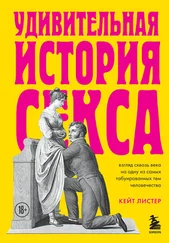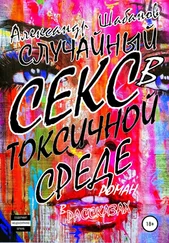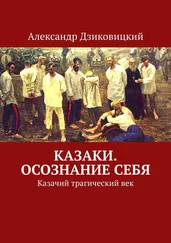4Vasari, Lives, 1:332.
5Benvenuto Cellini, Autobiography, trans. G. Bull, rev. ed. (London, 1998), 18.
6Vasari, Lives, 1:332.
7Ascanio Condivi, Michelangelo: Life, Letters, and Poetry, trans. G. Bull (Oxford and New York, 1987), 72–73.
8Vasari, Lives, 1:332.
9Condivi, Michelangelo, 72.
10Говорили, что отец Микеланджело происходил «из благороднейшего и древнейшего семейства», но, скорее всего, это лишь выдавание желаемого за действительное. Wallace, Michelangelo, 36; Michelangelo Buonarroti, II Carteggio di Michelangelo, ed. P. Barocchi and R. Ristori, 5 vols. (Florence, 1965-83), 4:249–250.
11В Сиене были художники, которые входили в органы местного управления. Дуччо ди Буонисенья (1255/60-1315/19) был членом Народного совета Сиены в 1289 г. Его имя дважды упоминается в связи с другими органами управления в 1292 и 1295 гг. 8 февраля 1340 г. Симоне и Донато Мартини были назначены прокураторами папской курии. В Сиене были художники необычно высокого происхождения. Бартоломмео Булгарини (ум. в 1378 г.), судя по документам гильдии художников, родился в благородном семействе. Происхождение его было настолько высоким, что его семье было запрещено занимать должности в органах управления из-за их высокого статуса. Н. В. J. Maginnis, The World of the Early Sienese Painter (Philadelphia, 2001), 76–82.
12M. V. Schwartz and P. Theis, «Giottos Father: Old Stories and New Documents», Burlington Magazine 141 (1999), 676–677.
13Maginnis, The World of the Early Sienese Painter , 46–47.
14Особенно хорошо эта тема раскрыта в книге A. Martindale, The Rise of the Artist In the Middle Ages and Early Renaissance (London, 1972).
15P. L. Rubin, Giorgio Vasari: Art and History (London, 1995), 292–293; J. Larner, Culture and Society In Italy, 1290–1420 (London, 1971), 305; Maginnis, The World of the Early Sienese Painter , 80–81.
16Larner, Culture and Society, 279–280; Maginnis, The World of the Early Sienese Painter, 80.
17Великолепный обзор контрактных отношений между художниками и меценатами можно найти в книге Е. Welch, Art and Society In Italy 1350–1500 (Oxford, 1997), 103–130.
18Cellini, Autobiography, 130.
19P. Barocchi, ed., Scritti darte del cinquecento, 3 vols. (Milan and Naples, 1971–1977), 1:10.
20Vasari, Lives, 1:423.
21Michelangelo, verse 83,11.1–4; trans. from Poems and Letters, trans. A. Mortimer (London, 2007), 23.
22Об обвинении Леонардо в содомии см., к примеру, L. Crompton, Homosexuality and Civilization (Cambridge MA, 2006), 265; G. Creighton and M. Merisi da Caravaggio, Caravaggio and his Two Cardinals (Philadelphia, 1995), 303, n. 96; R. Wittkower and M. Wittkower, Born Under Saturn: The Character and Conduct of Artists: A Documented History from Antiquity to the French Revolution (New York, 2006), 170–171.
23Подробное описание сексуальной жизни Челлини дается в статье Р. L. Rossi, «The writer and the man – real crimes and mitigating circumstances – II caso Cellini», In K. Lowe and T. Dean, eds., Crime, Sexual Misdemeanour and Social Disorder In Renaissance Italy (Cambridge, 1994), 157–183. Необходимо также отметить, что в 1543 г. Челлини обвиняли в содомии некое Катерины: Cellini, Autobiography , 281–283.
24Cellini, Autobiography , 91, 128–129.
25Ibid., 184–189.
26См. C. Grey and P. Heseltine, Carlo Gesualdo, Musician and Murderer (London, 1926).
27J. Burckhardt, The Civilization of the Renaissance In Italy ,trans.S.G. C. Middlemore (London, 1995), 87, 90–91.
28Точка зрения Буркхардта на «открытие личности» подвергалась серьезному пересмотру. Аргументы против подобного подхода можно найти в ряде источников, в том числе: Н. Baron, «Burckhards Civilization of the Renaissance a Century after Its Publication», Renaissance News 13 (1960): 207–222; Macginnis, The World of the Early Sienese Painter , 83-113; M. Baxandall, Painting and Experience In Fifteenth-Century Italy (Oxford, 1972); B. Cole, The Renaissance Artist at Work from Pisano to Titian (London, 1983); A. Thomas, The Painters Practice In Renaissance Tuscany (Cambridge, 1995); M. Becker, «An Essay on the Quest for Identity In the Early Italian Renaissance», In J. G. Rowe and W. H. Stockdale, eds., Florilegium Historiale: Essays Presented to Wallace K. Ferguson (Toronto, 1971), 296–308; W. Stedman Sheard and J. T. Paoletti, eds., Collaboration In Italian Renaissance Art (New Haven, 1978); M. M. Bullard, «Heroes and their Workshops: Medici Patronage and the Problem of Shared Agency», Journal of Medieval and Renaissance Studies 24 (1994): 179–198; A. Guidotti, «Pubblico e private, committenza e clientele: Botteghe e produzione artistica a Firenze tra XV e XVI secolo», Richerche storiche 16 (1986): 535–550.
29S. Greenblatt, Renaissance Self-Fashioning. From More to Shakespeare (Chicago, 1984).
30S. Y. Edgerton, The Renaissance Rediscovery of Linear Perspective (New York, 1975); E. Panofsky, «Die Perspektive als symbolische Form», Vortrage der Bibliothek Warburg 1924–1925 (1927): 258–330. Дополнительную информацию о взглядах Панофски на линейную перспективу в эпоху Ренессанса см. С. Landauer, «Erwin Panofsky and the Renascence of the Renaissance», Renaissance Quarterly 47/1 (1994): 255–281, esp. 265–266; К. P. F. Moxey, «Perspective, Panofsky, and the Philosophy of History», New Literary History 26/4 (1995): 775–786.
31См. H. Wohl, The Aesthetics of Italian Renaissance Art: A Reconsideration of Style (Cambridge, 1999); см. Также статью C. R. Mack, Renaissance Quarterly 53/2 (2000): 569–571.
32В этой связи см., к примеру, следующие статьи и книги: Е. Н. Gombrich, «From the revival of letters to the reform of the arts», In D. Fraser, H. Hibbard, and M. J. Lewine, eds., Essays In the History of Art Presented to Rudolf Wittkower (London, 1967), 71–82; R. Weiss, The Renaissance Discovery of Classical Antiquity (New York, 1969); B. Rowlands Jnr., The Classical Tradition In Western Art (Cambridge MA, 1963).
33См. Panofsky, Renaissance and Renascences , 9; M. Baxandall, Giotto and the Orators: Humanist Observers of Painting In Italy and the Discovery of Pictorial Composition, 1350–1450 (Oxford, 1971); С. E. Gilbert, Poets Seeing Artists' Work: Instances In the Italian Renaissance (Florence, 1991).
Читать дальше
Конец ознакомительного отрывка
Купить книгу
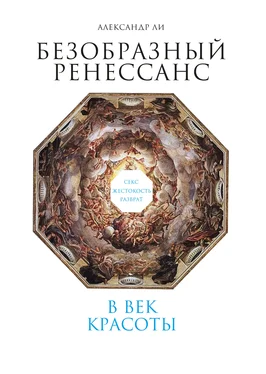


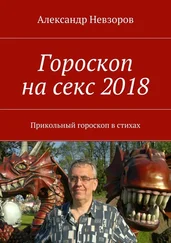
![Александр Бадак - Всемирная история в 24 томах. Т.1. Каменный век [гнусная калибрятина]](/books/401178/aleksandr-badak-vsemirnaya-istoriya-v-24-tomah-t-1-thumb.webp)




